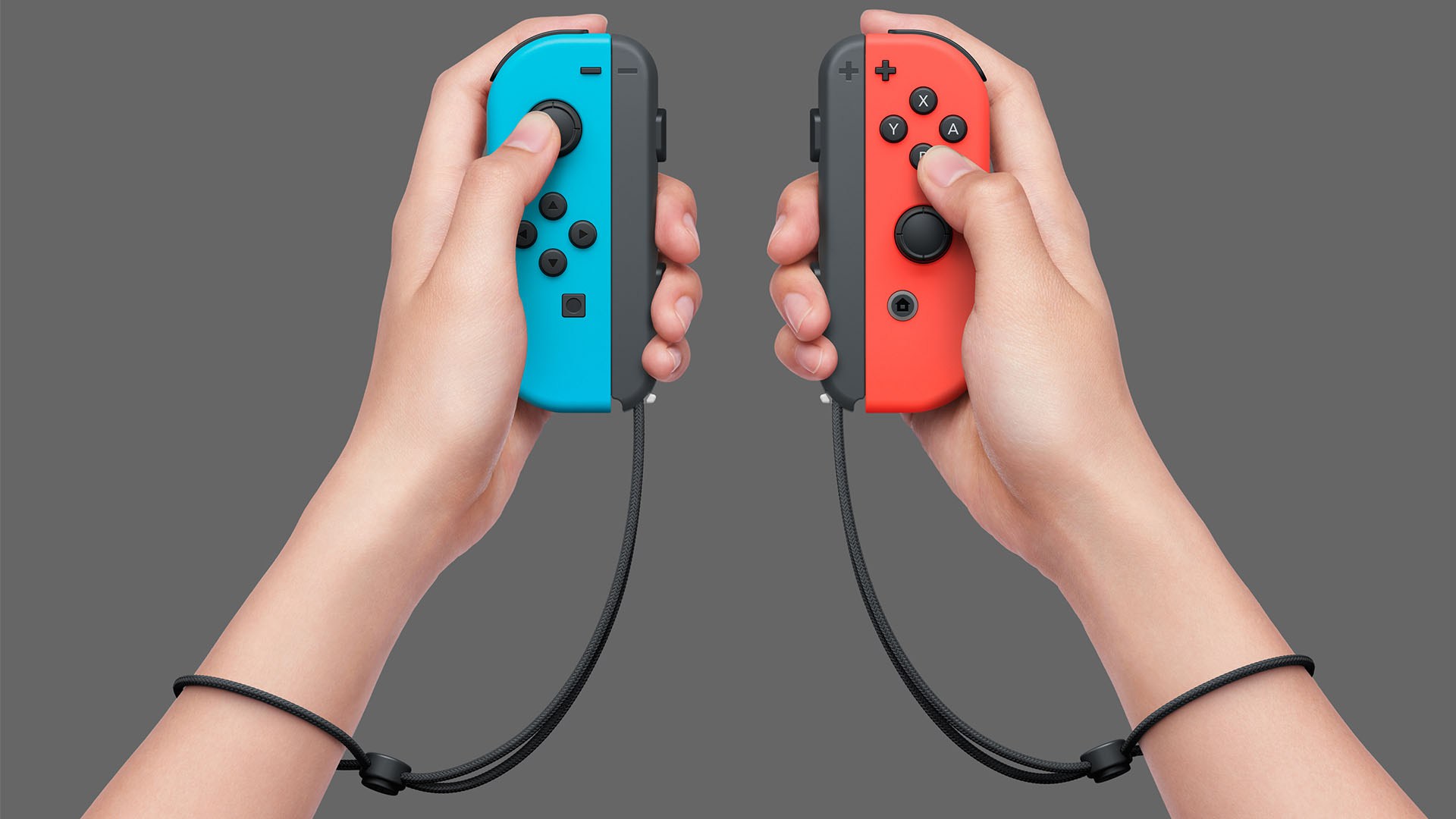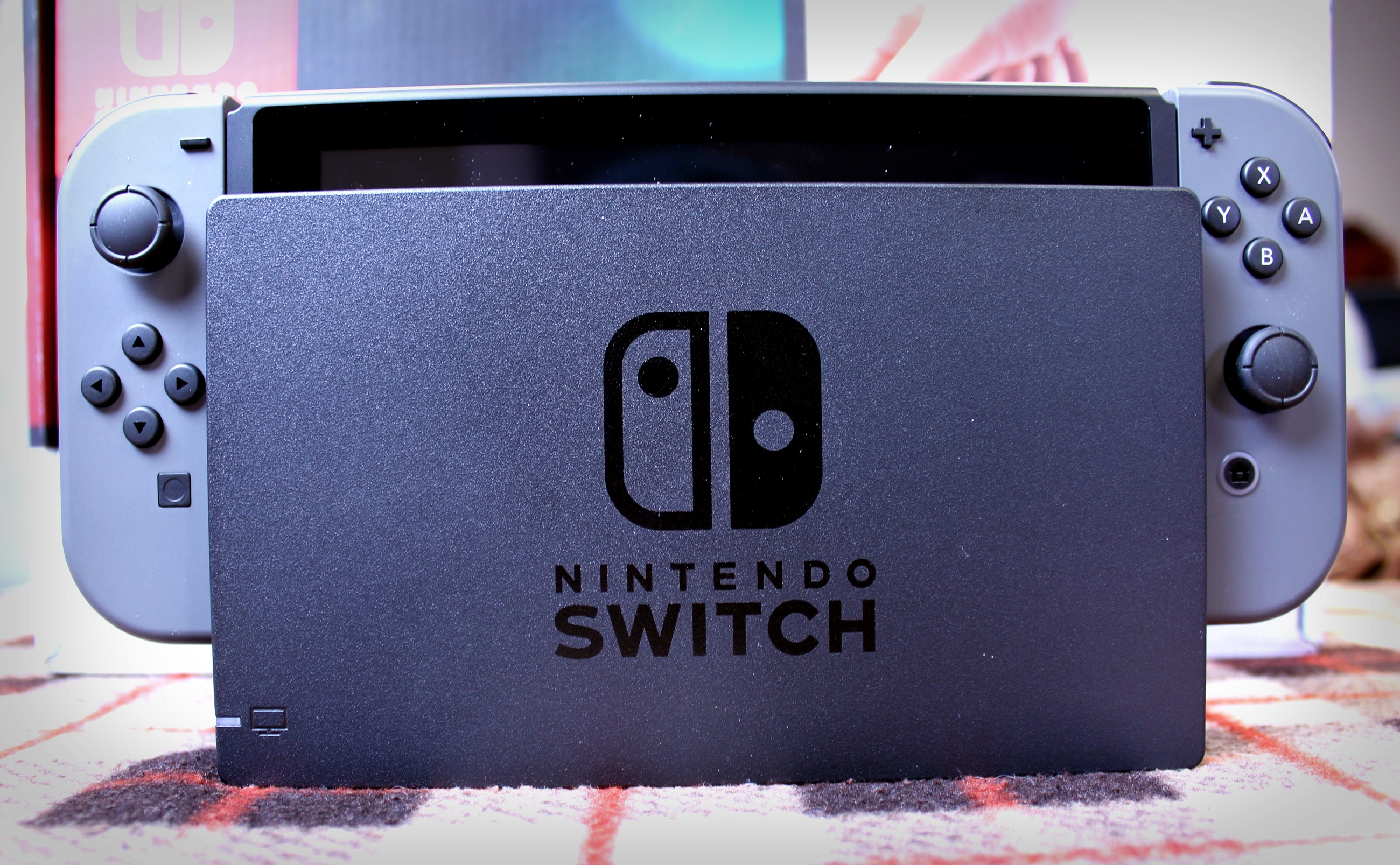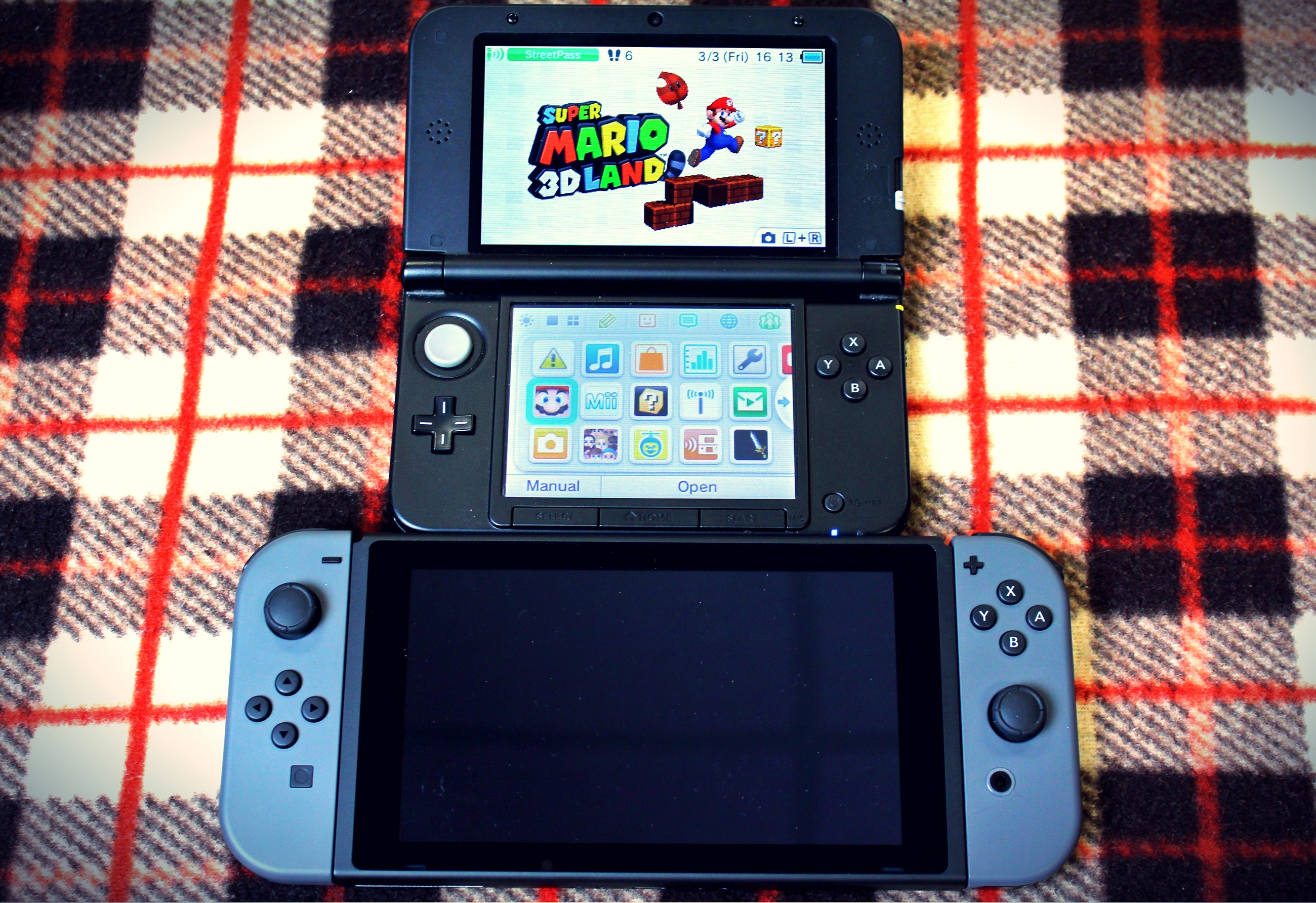The night of Thursday, March 2nd was quiet and still, except for a few select stores who opened their doors at midnight to sell boxes of the Nintendo Switch to the public. Having pre-ordered our Nintendo Switch at Best Buy, we drove the empty streets to a packed parking lot where over 100 prospective buyers gathered.
In the line to pick up our pre-order, we engaged in some interesting conversations about our Nintendo Switch hopes and fears. How will the device fair? What about the accessories, the Pro Controller, carrying case, protection plan, etc?
Today, we opened up the box, pulled everything out one-by-one, and have cataloged our initial impressions down below.
Nintendo Switch First Impressions

First up, let’s start with the exterior packaging. The box for the Nintendo Switch is aesthetically pleasing. In comparison to the packaging for its predecessor, the Wii U, Nintendo definitely put more thought and effort into the Switch box design.
The same can be said for the exterior packaging of Nintendo Switch accessories, like the Pro Controller. After cracking open the smaller accessories first, including our copy of The Legend of Zelda: Breath of the Wild, the biggest factor we noticed was the size of everything.
Namely, just how small some of these components felt in our hands.
Itty Bitty Cartridges

The bittering agent applied to Nintendo Switch cartridges makes sense, as they’re absolutely microscopic in size. For comparative purposes, we grabbed a Nintendo 3DS cartridge and even an old Game Boy Color cartridge (Pokémon Blue, our beloved old friend).
Side-by-side, the Nintendo Switch cartridge is noticeably smaller than the 3DS cartridge, and is dwarfed by the classic Game Boy Color behemoth. Of course, the latter was merely for nostalgic purposes, though it’s an interesting experience to see how Nintendo cartridges have evolved over the years.

As for the taste, curiosity got the better of us, and we decided to find out whether the rumors were true. While our Breath of the Wild cartridge does indeed taste bad, it’s not as gag-worthy as many claim it to be. Despite being only mildly unpleasant, we feel it’s still sufficient enough to encourage small children to spit it out should they try to eat it.
For us, the cartridge size is a bit of a negative. Nintendo Switch owners will likely find them easy to lose, unless they remember to return them to their original package, or purchase a carrying case. Additionally, they’re easy to fumble and drop on the go, especially when trying to remove them from a case, then insert them into your handheld device, and vice versa.
Big Hands vs. Small Joy-Cons

Speaking of small, the Joy-Con controllers feel more suited to the hands of children than adults. However, we were pleasantly surprised by the Joy-Con grip that came included in the Nintendo Switch packaging. While it’s smaller than the Pro Controller, it’s definitely a nice option to have if you’re like us and have sausage fingers.
The Pro Controller, while pricey at $70, is a worthwhile option in terms of size and comfort. We found the Pro Controller to be surprisingly well-made. It also features a see-through black surface reminiscent of the see-through coloration on the Game Boy Color (like Atomic Purple).

The buttons on the Pro Controller are fine, though the d-pad is a bit firm, especially in comparison to an Xbox One or PlayStation 4 controller. We definitely feel the design is more cohesive than a Steam controller, while it also feels similar in our hands to that of the Xbox One controller (albeit a bit smaller). Overall, it’s a high-quality accessory that’s well worth the purchase.
The Joy-Cons aren't terrible by any means, though they could stand to be easier to remove from the handheld device. Oh, and don't get us started on accidentally putting the wrist-strap attachment on backwards. If you met the same unfortunate fate, we have a guide on how to remove a stuck wrist-strap attachment to help you out.
Disappointing Docking Station

In quality contrast, the Nintendo Switch docking station is another negative, feeling flimsy and somewhat cheap, it's mainly comprised of thin plastic. This point really hits home when you open up the back flap. There, you'll find inputs for the HDMI cable, AC Adapter, and USB. On the right side of the docking station, you'll find two additional USB slots.
Despite the relative solidity of the handheld device, the docking station is noticeably lacking. I mean, it doesn’t even have a weighted, sturdy base. The handheld device flops around in the center, and should you brush past it on accident, the dock could topple over and take the handheld device with it. Which is worrisome.
Keep in mind, if you break the docking station, you’re forced to shell out $90 for another one. If you break the handheld device? Well, you’re practically buying a new Switch at that point. We’re not exactly asking for the weight of a PlayStation 4 Slim, or even the Wii U, but a lot more thought and time could have gone into the Nintendo Switch docking station.
The Beauty of the Handheld Device

With the above factors in mind, we feel the Nintendo Switch handheld device is really where this console shines. It’s a significant improvement over the Wii U handheld device and has a large, gorgeous screen. At 6.2 inches and 720p, the screen is adequate for mobile gaming and definitely meets our initial expectations.
We recommend buying a carrying case, though, as the screen itself runs the risk of drop/shatter damage. It can also be damaged through scratches, scuffs, and applying too much pressure (though we’re certain no one is going to be jamming their elbows into the screen to test how much force it can withstand). The handheld is also quite wide, so you won’t exactly be toting this thing around in your pocket.
Fortunately, the cases available are all extremely nice and ensure the safety of your device when stored away in a bag with other items. The added USB-C charging capabilities, MicroSD support, and 3.5mm headphone jack are also nice touches.

In terms of the Nintendo Switch UI, it’s clean and visually pleasing. We found setting up the Nintendo Switch to be a user-friendly process. The same can be said for setting the Nintendo Switch up on your home television, as the packaging includes the requisite cables and is as simple as plugging in the power cable and attaching the HDMI cable to your television.
Finally, the volume output is sufficient, with speakers located at the top of the device. In comparison, the max volume is on par with the Nintendo 3DS if not a bit louder.
Final Thoughts

At $300 plus the cost of accessories ($70 for the Pro Controller), the Nintendo Switch doesn’t fit its price range as well as it probably should. Don’t get us wrong, it’s still a solid offering, and the handheld device on its own is superb. However, there are a few minor flaws which may or may not be remedied in the coming months.
For example, we hope Nintendo releases additional hardware options such as sturdier docking stations. We personally don't mind paying more for additional safety and security. The limited launch offering is also somewhat disappointing, and 1-2 Switch really should have come bundled with the console. That's not to say the Nintendo eShop won't gradually expand, as over 100 titles are currently in development.
As it stands, we can only recommend the Nintendo Switch to hardcore Nintendo fans, those looking to play The Legend of Zelda: Breath of the Wild (who don't already own a Wii U, as it's available on that platform as well), and indie game lovers. Obviously being passionate about indies here at Indie Obscura, we’re overjoyed that the eShop is set up to house more third-party titles than ever before.

If you’re looking for a birthday gift for your child, or a casual device to port around while you're out and about, the Nintendo 3DS is a more recommendable option at $200. Additionally, the 3DS is less cumbersome, more durable, and has a wider array of titles to choose from. The Nintendo Switch is better than its counterparts (Wii U, 3DS) in some respects, while noticeably worse in others.
There’s no real reason to rush out to buy one at launch. Our recommendation? Wait until Christmas to purchase a Nintendo Switch. By that time, there will be a large offering of titles, and hopefully bundles pre-packed with a game and accessories as well.
Rating: 6/10
For more on the Nintendo Switch here at Indie Obscura, be sure to check out how much storage space you need for the Nintendo Switch, take a look at the best MicroSD cards for the Nintendo Switch, and recap the complete list of Nintendo Switch games both upcoming and released.




